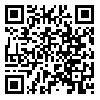BibTeX | RIS | EndNote | Medlars | ProCite | Reference Manager | RefWorks
Send citation to:
URL: http://jdm.tums.ac.ir/article-1-22-en.html

 , Mohammad Hosein Salari
, Mohammad Hosein Salari 
 , Mohammad Reza Pourmand
, Mohammad Reza Pourmand 
 , Zeinab Kadkhoda
, Zeinab Kadkhoda 
 , Abbas Foroushani
, Abbas Foroushani 
 , Farzaneh Aminharati
, Farzaneh Aminharati 
 , Sedigheh Ghourchian
, Sedigheh Ghourchian 
 , Zahra Pakbaz
, Zahra Pakbaz 
 , Saeed Eshraghi *
, Saeed Eshraghi * 
 1
1
Background and Aims: Periodontitis is one of the most common oral diseases with the various incidence rates in different populations. A number of bacteria are considered as the major etiologic agents of periodontitis. The aim of the present study was to determine the prevalence of periodontopathogen bacteria in patients using both PCR and culture techniques.
Materials and Methods: In this study, one-hundred patients (including 62 females and 38 males with an average age of 49±11.5 years) with adult periodontitis referred to periodontics department of School of Dentistry/Tehran University of Medical Sciences were investigated. The samples were taken and sent immediately to the laboratory for culture and molecular evaluation. The PCR was performed using specific primers and the statistical analysis of data was performed using SPSS statistic software and McNemar test.
Results: The results demonstrated that the total detection rate in culture method was 64%. The rate of Aggregatibacter actinomycetemcomitans (Aa) was 28% which was significantly higher than that of Porphyromonas gingivalis (Pg) (6%) and Prevotella intermedia (Pi) (3%). 27% of cases showed mixed bacterial growth. 65% of patients were positive using molecular method. The rate of Aa (30%) was significantly higher than that of Pg (7%) and Pi (5%). The mixed PCR positive rate containing of Aa, Pg and Pi was (23%).
Conclusion: In this study, it was found that most of the bacteria isolated using culture and molecular methods were Aa, Pg and Pi, respectively. Although the detection frequencies of both techniques were similar, the specificity, sensitivity and bacterial detection speed of the PCR technique is obviously higher. Therefore, the use of molecular techniques is strongly recommended. However, both techniques seem to be suitable for microbiological diagnostics.
Received: 2011/09/6 | Accepted: 2012/07/25 | Published: 2013/09/16
| Rights and Permissions | |
 |
This work is licensed under a Creative Commons Attribution-NonCommercial 4.0 International License. |


